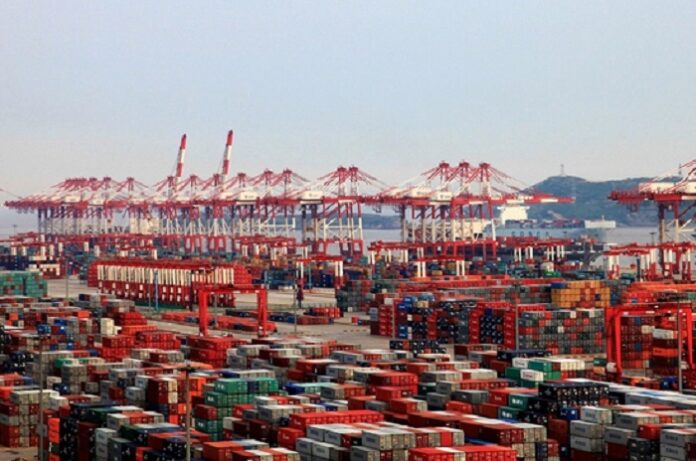
-
China will lift on January 8 pandemic-related restrictions imposed on cargo ports for more than a year as the country reopens its borders after ending it “zero-COVID” policy
-
Shanghai Port staff cited by Caixin said, in particular, the closed-loop management under which frontline workers at ports are kept isolated while doing their shifts will be ended
-
Logistics industry players are worried ending the zero-COVID policy could worsen the situation as COVID spreads unchecked among Shanghai’s 25 million residents
China will be scrapping pandemic-related port curbs in Shanghai in early January 2023 as the country reopens its borders after ending its “zero-COVID” strategy, Chinese online business news portal Caixin Global reported on December 28.
The National Health Commission has announced the government will stop treating COVID-19 as a “Class A” infectious disease on January 8 and lift restrictions on international travels in another major reopening step, Caixin reported.
In particular, the authorities will scrap the closed-loop management of ports, and frontline workers at ports, including pilots, foreign vessel service staff and stevedores will no longer be kept isolated while working their shifts, the report said, citing Shanghai Port staff.
The news comes just days after Shanghai, the world’s biggest container port, was reported to be isolating the shipment of international goods to prevent disruptions to global exports as a COVID wave sweeps across China, according to a Bloomberg report on gCaptain.com.
The port is keeping overseas vessels in a closed-loop zone to avoid massive delays, Bloomberg had reported earlier, quoting an oil shipping broker as saying. Backup teams and emergency plans have also been put in place as most infected staff showed mild symptoms, the broker said.
China’s immigration department also announced it will resume issuing visa to foreign ship crews, ending a year-old entry ban on overseas seafarers, the report added.
The impending changes are welcomed by industry experts, who told Caixin the moves would ease workforce strain at Chinese ports and stabilize the country’s trade flows.
RELATED READ: Shanghai factories crank up as COVID infections wane
Logistics industry players, however, are worried the COVID policy loosening could worsen the health situation, as the virus makes its way virtually unchecked through Shanghai’s 25 million-strong population.
Bloomberg cited logistics specialist Dimerco Express as saying the surge in cases has begun impacting supply chains that rely on China and that may escalate in the approach to the Chinese New Year next month.
China introduced strict virus control rules in ports in August 2021, requiring frontline workers to stay within a closed loop connecting their worksites and dorms during their seven- to 14-day shifts. Workers also need to be quarantined after their shifts end before they can move freely, Caixin said.
International airline crews and airport workers who follow similar closed loop management also expect the authorities to be scrapping pandemic port curbs imposed on them, the report said.
While such measures have effectively contained the contagion, it has reduced efficiency of port operations, the report quoted a trader at the Shanghai Shipping Exchange as saying.
China began unravelling in November its strict Covid control measures, including sporadic lockdowns of whole city districts, that have been in place for almost three years under the “zero-COVID” policy.
While there are delays of ship repairs at Zhoushan Port and loading activities in Shanghai have slowed due to lower staffing, for the most part Chinese ports are continuing to operate, according to industry workers cited by Bloomberg.
The news agency said so far, the ports aren’t struggling as much as they did early this year, when lockdowns to contain the virus brought chaos to already stressed supply chains. Factories shut down and trucking ground to a halt, adding to pile-ups of containers on the docks and contributing to months of backlog.
One big difference is that ports are now operating in a dramatically changed economic environment, as global demand has significantly weakened, helping untangle the congestion in trade. At the same time, China’s shift away from zero-COVID comes as shippers enter a seasonal slow period ahead of the holidays.




